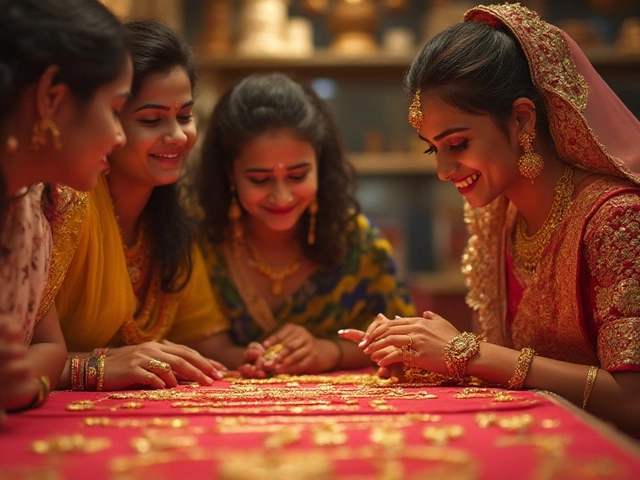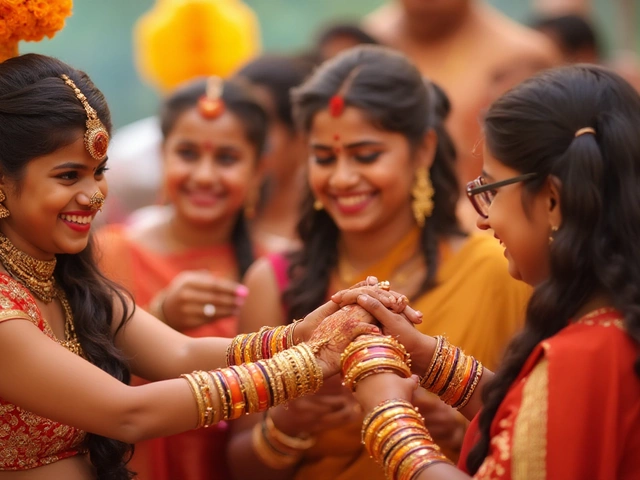Christianity and Indian Jewellery: What the Bible Actually Says
When you think of Indian jewellery, you picture gold bangles, intricate mangalsutras, and bright nose pins. But how does Christianity fit into that colorful world? A lot of people wonder if holy texts ever mention these pieces. The short answer: the Bible doesn’t name Indian jewellery, but it does talk about how jewelry can reflect faith, values, and culture.
One of the most common questions we get is, “Does the Bible mention mangalsutra?” The short answer is no. Mangalsutra is a Hindu marriage symbol, not a Christian one. However, the Bible does discuss the idea of rings and bands as signs of commitment (see Genesis 24:22 and Song of Solomon 8:6-7). Those verses talk about a ring as a token of love, which is similar in spirit to what a mangalsutra represents – a promise of partnership.
Key Bible Passages About Jewelry
Even though the Bible doesn’t list Indian styles, it gives a clear view on how to treat any adornment. 1 Timothy 2:9-10 says women should dress modestly, focusing on good deeds rather than flashy clothing. Proverbs 31:25 mentions a virtuous woman who is “clothed in strength and dignity,” not necessarily in gold, but in inner confidence. These verses remind us that jewelry should never replace character.
On the other hand, Exodus 35:2-3 permits the making of gold and silver items for the Tabernacle, showing that using precious metal isn’t wrong – it’s how you use it that matters. So if you love a gold necklace, wear it proudly, but let your actions shine brighter.
Bridging Cultures: Christian Couples and Indian Traditions
Many Indian Christians marry within the broader community and still honor family customs. Some choose to wear a simple gold band for the wedding and keep a mangalsutra as a family heirloom, not as a religious requirement. The key is to respect both faith and family heritage.
If you’re planning a wedding, think about these practical steps:
- Talk with your family about which pieces hold sentimental value.
- Choose jewellery that matches both your style and the ceremony’s tone.
- Remember that the Bible’s focus is on love, not the sparkle.
Most Indian Christians also love stone‑set pieces – emeralds, rubies, and sapphires – because they add color without clashing with church attire. The Bible never bans gemstones, so feel free to pick a piece that feels personal.
One popular article on our site, “Does the Bible Mention Mangalsutra? Exploring Christian and Hindu Marriage Symbols,” breaks down these ideas in plain language. It’s a quick read that clears up the myth that you have to avoid all traditional jewellery if you’re Christian.
In everyday life, the same principles apply. Whether you’re buying a gold chain, a pair of silver studs, or a vintage brooch, ask yourself if the piece reflects who you are. If it does, go ahead. If it feels like a forced tradition, maybe skip it.Bottom line: Christianity doesn’t dictate a dress code for jewellery, but it does encourage humility, honesty, and love. Use those values as your guide, and you’ll find the perfect balance between faith and fashion.
Can Christians Wear Bindi?
The question of whether Christians can wear a bindi often surfaces at the intersection of cultural expression and religious identity. While the bindi holds significant cultural and religious meaning in Indian culture, many now wear it as a fashion statement. This article explores the bindi's origins, its significance, and how it fits into modern, multicultural wardrobes, particularly for Christians. Understanding these elements helps navigate the blend of personal expression and respect for tradition.





